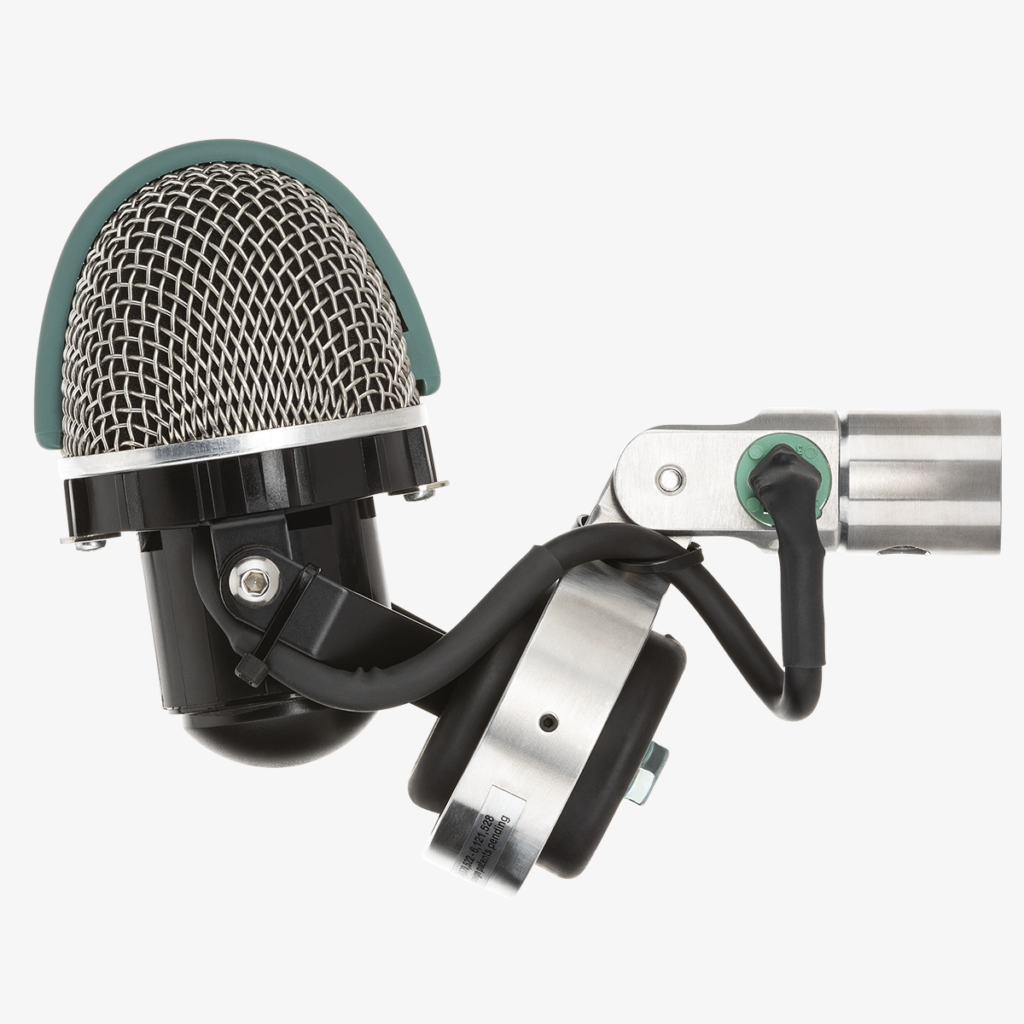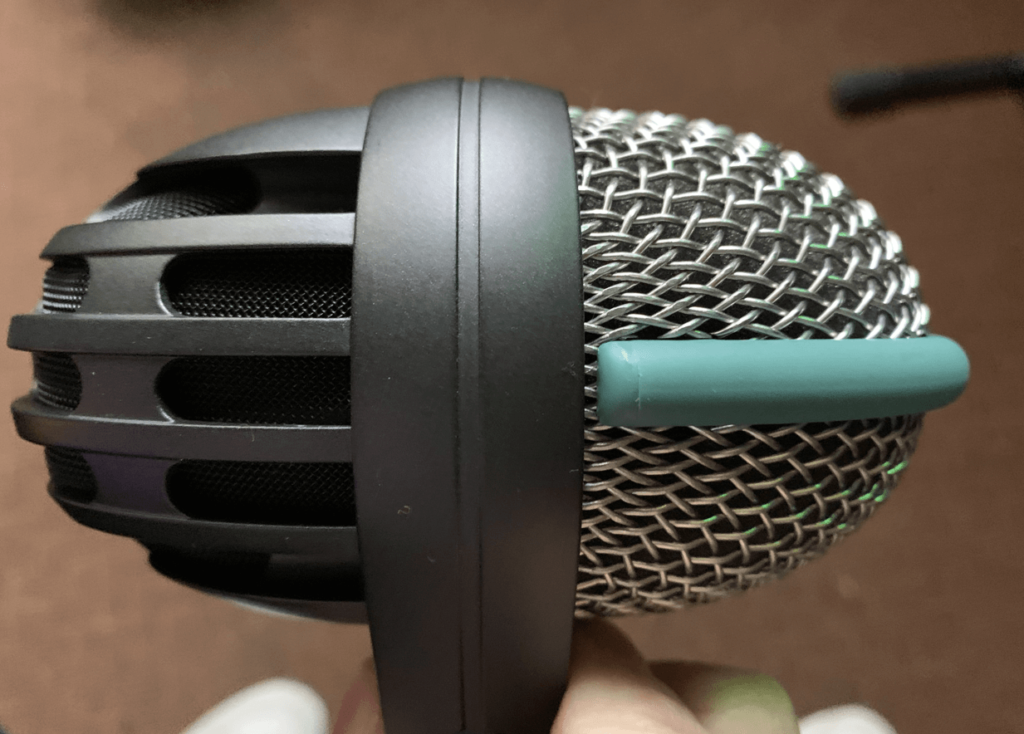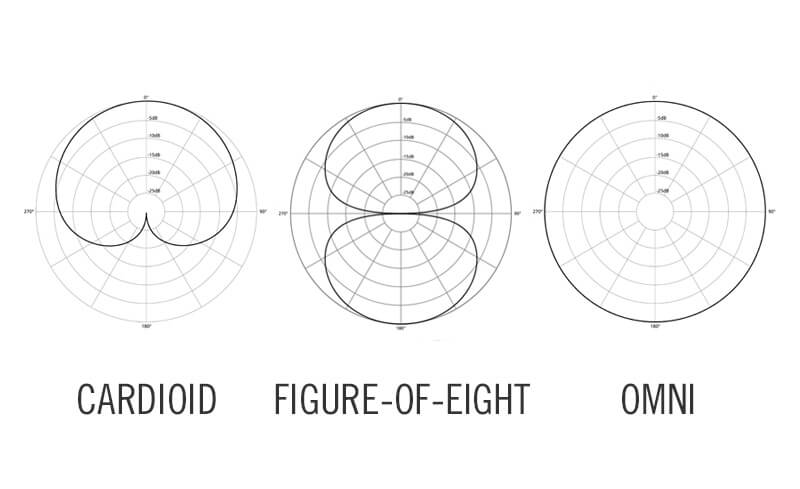
For decades, AKG has been offering high-quality microphones to the professional industry that not only deliver excellent performance but are also loved for their aesthetically pleasing design and long-lasting build. D112 is one such creation of this audio giant that has gained many appreciations and favorable AKG D112 reviews online. Well, there are a few criticisms here and there as well, but which product doesn’t have. The best part about the brand is that AKG takes the opinion of the critics seriously and addresses them in their next model or the upgraded version. Here we are producing our own AKG D112 Review.
What is AKG D112?
So what is D112? If you have attended a live concert or listened to the track of your favorite band, you would have definitely noticed the perfectly accentuated sound of the kick drum in harmony with the rest of the instruments. The kick drum, also known as the bass drum, plays a vital role in the orchestral track, giving the entire presentation a rhythmic beat. Reproduction of this low pitch sound has to be accurate, which is where the kick drum microphones come into the picture.
AKG D112 (discontinued at present) had been one of the classic microphones from the brand’s microphone offerings, designed specifically for the bass drum. Now, initially, we had set out to review this original version, AKG D112 MK1 (its former name), but unfortunately, the company has decided to discontinue the product for some reason. The good thing is, they have come up with a fresh version, AKG D112 MKII which inherits the same sonic capability of its predecessor that had made it one of the best bass drum mics to go for.
The only major difference between the older and the new models is that this time AKG has integrated a new sturdier flexible mount, which in the older version was quite narrow and weak. You needed to use an additional mounting clip to fit the mic properly, which only meant that it was more susceptible to wear and tear.
That is why, in this article, we are going to do a detailed AKG D112 review on the new version (D112 MKII) including the AKG D112 pad, AKG D112 type, the pros and cons of this microphone, and more.
What is it good for?
D112 MKII is ideal for both live or stage shows and professional studio use. They are perfect bass drums, guitar, or bass amps. The mic helps in amplifying the lowest frequency notes or the indefinite pitch without any kind of distortion.
So now that you have a fair idea about the AKG D112 and its upgraded versions, without delaying further, let’s move on to the next section.
Akg D112 Review: the Design and Build, Significant Features of the Mic, AKG D112 Type, Price, Pros, and Cons
Being a product of AKG, D112 is both efficient and reliable, which makes it one of the top choices of several stage performers and other professional drummers. Looking for a good microphone for instruments can be very tricky and if it is low definite, you will need a well-tuned microphone that produces sound with exceptional accuracy and with good balance, so it doesn’t sound too heavy or boomy to overshadow the other elements present on the soundtrack.
As mentioned earlier, D112 is one of the finest kick drum mics which is backed by numerous positive reviews and ratings from top audio engineers, professional performers, and even casual users.
Now, many people researching this mic want to know about the AKG D112 type. There are many types of microphones available in the market designed for specific needs. We will discuss all these types a bit later, but for now, about AKG D112 type- it is a ‘dynamic’ microphone with the ability to handle an immensely high volume of sound.
For those who are new to the term, dynamic microphones are those that convert sound waves into electrical signals by the process of electromagnetism. These types of mics are usually preferred in live shows and on stage because their build is sturdier than the other types of microphones. Dynamic mics also do not require external power to operate, which makes them pretty convenient for outdoor use.

Akg D112 Review- Design and Build
Looking for a good quality microphone, the very first thing that comes to your mind is it going to be durable? How good is its resistance power to withstand the long hours of recording sessions? Well, when it comes to AKG D112, we are talking about a brand that is known to provide one of the best audio solutions in the market which also includes the overall construction quality.
This kick drum microphone has an oval or egg shape, just like that of its classic older version. The entire construction is done with metal, so the mic is pretty solid and hard-wearing. The traditional silver grille houses the capsule inside which does an excellent job in stabilizing the microphone’s sound, while the solid metallic other half offers outstanding protection against the vibrations created due to the high-volume low pitch sounds.
Unlike the original AKG D112, its D112 MII counterpart is integrated with a more resilient mount. The mic’s screw thread enables it to affix easily with the stand without the need for an additional clip, while it still holds the standard XLR connection. This makes mounting and dismounting extremely easy, and it can fit into any threaded stand without an issue.
Thanks to the flexible mount, you can swivel the mic and place it anywhere you want or at any angle to get the maximized output. No wonder, the mic sets a standard in the industry when it comes to kick drum miking solutions.
Another interesting thing that makes this microphone desirable is that, despite the rugged build, the microphone is one of the most lightweight studio mics available around the globe with just 300g weight. This combined with its high ability to withstand the reverberations empowers it with extensive stability and prevents the mic from toppling over.
Akg D112 Review- Special Features and Performance
All this while we have been praising the design and construction of this microphone. But how does it really perform on stage or in the recording room?
Honestly speaking, this equipment has earned pretty good AKG D112 reviews from its users and owners. While this should give you a lot of confidence to go for it, let’s discuss the various features that make it one of the “best kick drum mic in the world”.
Large-diaphragm
AKG D112 MKII carries the massive-sized diaphragm technology from its predecessor that is specifically designed for a precise and powerful low-frequency response. Tailored to deliver superior and accurate sound lower than 100 Hz, D112 MKII succeeds in not only providing a great miking for bass drums but every other low pitch instrument like bass guitar, trombones, etc. The mic has a slight enhancement at 4kHz, which paves the way for it to stand out prominently even when there is a noisy surrounding occupied by other instruments or elements.
So, basically, the sound that a kick drum produces has two different elements-the first is the low frequency resound and the second is the sound of the beater striking the head of the kick drum which is between the mid to the upper frequencies. While different microphones need to be tuned differently to pick up both the elements with accuracy, AKG D112 can maneuver it effortlessly once placed at the proper angle.
High Sound Pressure Level
This AKG D112 type boasts of being able to effectively deal with a sound pressure level of over 160 dB and has a sound sensitivity of -55 dBV/Pa. This combined with a frequency response of 20 Hz to 17,000 Hz means that the mic performs phenomenally well even when the sound is very loud. There is no distortion at the lows or the high ranges. The extremely low signal-to-noise ratio (SNR) adds to the dynamic performance of the mic, allowing it to pick up every low-frequency sound clearly and separately.
AKG D112 Polar Pattern
The polar pattern of the mic plays an important role in deciding the amount of signal picked up by it from different directions. Whether you choose a mic for vocals or for instruments, it is extremely significant to choose the right polar pattern for the mic to perform optimally without picking up the unwanted ambient noise. AKG D112 is a Cardioid microphone, which means that it is extremely directional. Most of these mics’ sound sensitivity comes from the front side of the capsule, and it is least to zero sensitivity behind. This pickup pattern allows the mic to focus on exactly where it needs to pick up the sound from, so you get a clean low range without any distortion or interference.
No Extra EQ Settings Needed
Yet another reason why it has earned so much love and respect, along with so many positive AKG D112 reviews from several artists and sound experts. This instrument requires no additional effort to set up or adjust the sound profile to get the right acoustics. The mic has been specifically tailored for the bass drums and bass-forward instruments, so you can directly plug it in, and it is ready to produce the best punchy sound for you. Clearly, there is no AKG D112 pad of its own.
Additionally, the built-in hum compensation coil reduces the ambient noise, effectively enhancing the sound quality even more.
Compatible With Different Sizes of Instruments
With so much high-fidelity engineering inside this not-so-big dynamic mic, it has the ability to produce extraordinarily precise sound across the entire frequency range. This makes it a perfect option for any kind of kick drums or bass drums, irrespective of the size.
AKG D112 Vs Shure Beta 52A
Many people find it challenging to figure out the difference between AKG D112 vs Shure Beta 52A because both of their sound characters are pretty close. Shure Beta 52A is a super-cardioid microphone designed for low bass instruments, especially bass drums. So the major difference between AKG D112 vs Shure Beta 52A is that the latter has a more focused pickup angle and higher sensitivity to sound. This means that there is a better rejection of sound from the sides. The only thing with a super-cardioid mic is that it is a little sensitive at the back as well, so it can pick up the sound from the sources right behind it.
Many users who have tried and compared both the microphones however mentioned in their AKG D112 reviews that there is also a difference in sound between AKG D112 vs Shure Beta 52A. Beta 52A is designed to pick up even lower frequencies, delivering intense sound with higher accuracy than AKG D112. This microphone is also great for larger bass or kick drums, whereas AKG D112 is said to perform better with smaller drums or the standard ones. However, it completely depends on individual hearing preference, and you can use D112 with instruments of any size as mentioned earlier.
How Much Does Akg D112 Mkii Cost?
AKG D112 is pretty reasonably priced even though this instrument is packed with features for the best-in-class output. The headphones will cost you $209.00.

AKG D112 Review- Pros and cons
Even the finest pair of microphones are not completely perfect, and so is the case with AKG D112. Luckily there isn’t a huge list of disadvantages and the list of benefits is definitely heavier than that. But, if you are planning on buying this, it is important for you to be aware of it.
Pros:
- Best-in-class microphone for kick drums.
- Incredibly clear, crisp and accurate sound quality.
- There is versatility in sound thanks to the balanced, neutral presentation.
- The bass response is hard hitting and if placed properly, it picks up the sound of the kick drum wonderfully.
- Reasonably priced when compared with other bass drum mics in the market.
- Comes with a strong and sturdy mounting stand that offers greater stability.
- Extremely durable, built with high ability to withstand impact and shock.
- Lightweight construction.
- Ideal for instruments of all sizes.
- Great AKG D112 reviews from experts and professionals.
Cons:
- Great for studio and stage use but may not be great for home use.
- Need expert hands to position the mic appropriately. The mic requires exact placement in the right direction, so you can get the best results.
- Some users find the XLR placement to be slightly weird.
So, now that you have a detailed review on AKG D112, you probably know by now whether this mic is meant for your next stage show or not. When using mics, it is also important for you to have a basic knowledge about the microphones and how they function. This will not only help you in purchasing the right kind of product but also empower you with knowledge on how you should place it and which mic would be ideal for what purpose.
In the next section, we will cover some general details about microphones.
What Are the Different Types of Microphones? How Do Mics Work?
Different types of microphones available in the market record differently and are ideal for different types of applications. The most common types of microphones available in the market are:
- Dynamic mics
- Small Diaphragm Condenser mics
- Large Diaphragm Condenser mics
- Ribbon Mics
Dynamic Mics
These mics have an extremely sturdy build and can hold up well against any weather or temperature conditions. They are usually the most inexpensive type of mic and can be used for a wide range of applications. The mics have the ability to handle high sound pressure levels (SPL) which means that they can produce a really loud sound. In most cases, these types of mics have little lesser sound sensitivity when compared with the other mics, so they need to be kept closer to the audio source to get the best results. Nonetheless, considering the affordability, easy availability, and versatility of the mic, these microphones are ideal for both professional and consumer use.
Dynamic microphones are ideally suited for stage performances, musical instruments like guitar, snare drums, mouth organs, vocals, or literally anything unless any special type of instrument requires specialized mics. Shure PG ALTA PGA48 is a great example of a good dynamic mic.
Small Diaphragm Condenser Mics
Small Diaphragm Condenser (SDC) mics, also often termed as pencil condensers are smaller as the name implies. In case you are wondering if they perform well, then, don’t get misguided by their size. With their extended ability to capture sound accurately at the upper frequencies and great, fast transient response, these mics are very useful in a variety of applications with quiet ambiance. Professionals use them for vocal recordings in the studio, to achieve the stereo effect, acoustic guitars where you need to keep the mic closer for the best sound. Check out our other article from here: AKG P120 manual
The polar pattern of this mic is very precise and consistent, which makes it a perfect option for classical recordings where detailed sound reproduction at every frequency is essential. Some good LDC mics are Neumann KM 184 or Shure SM137.
Large Diaphragm Condenser Mics
One of the best choices for vocal recording, Large Diaphragm Condenser (LDC) mics offer incredible performance when it comes to producing accurate and crystal clear audio. LDC mics do a great job in capturing low-frequency sounds with solid accuracy, but their mid-range and top-end performance are quite good. The sound produced by these mics is pretty amplified, has a large stage, and is very engaging. The mics are great for high-fidelity recording, studio set up, or even outdoor shows and offer rich, life-like sound. AKG D112 is one of the finest examples of LC mics.
Both SDC and LDC mics are extremely versatile options and if appropriately installed, they can give amazing results.
Ribbon Mics
Although these mics are susceptible to Phantom power and can be damaged by it, these mics stand somewhere between the Dynamic and the condenser mic in terms of the overall performance. Ribbon mics are available in different types and depending on the type they have a wide range of applications. You can use these mics for Drum overheads, guitar speaker cabinets, synthesizers, or even for vocals. The only trick is to choose the right kind of ribbon mic suitable for the instrument you need it for. You get a warm, naturally welcoming sound from these mics that give a pleasing listening experience.
The name ‘ribbon’ is used in the name because the mic literally uses a super thin ribbon of electro-conductive material put up between two magnetic poles for generating the signal. Earlier constructed ribbon mics were pretty fragile, but these days with betterment in technology they have a better construction when it comes to durability.
You can check out Royer R-10 to check out what ribbon mics are like.
How do mics really work?
The working mechanism of microphones is quite interesting. They convert the sound energy to electrical energy to produce an amplified sound. In fact, the process of producing sound on a mic is exactly the opposite of how a loudspeaker works.
When you speak or sing or a sound from an instrument is produced, the soundwave travels through the air, entering into the mic. There is a diaphragm present inside the mic that vibrates or moves back and forth when the sound wave hits it. This sets the magnet and the coil fixed to the diaphragm in motion. Once in motion, the magnet creates a magnetic field that passes through the coils and during this process generates an electric current. Check out this article to learn about AKG N700nc problems.
The electric current now flows out of the microphone chamber to an amplifier or the recording device, and that’s how the sound reproduction takes place.

Different Patterns of a Microphone
The microphones also have different polar patterns like cardioid, omnidirectional, bidirectional, or figure-eight that determine which direction the mic’s sensitivity is focussed on. It is important to pick up the appropriate polar pattern of the mic depending on where and what you are going to use it on for best results.
Conclusion
As for the AKG D112 MKII, it is a wonderful piece of microphone that features high-fidelity sound, outstanding durability, and versatility. Being able to deliver exceptional low-frequency sonic solutions with its revolutionary sound technology, it is a top choice of many studio artists worldwide. However, it is significant to remember that this microphone gives its best only when the placement is proper. With the cardioid polar pattern, the mic is extremely directional, which means that you need to set the mic exactly in front of the main audio source. And, to make it easier, AKG D112 MKII is provided with a flexible mount that can be directed or positioned as needed.
The bottom line is, if you are looking for a stellar microphone with extensive bass production capability that hardly needs any EQ efforts to set up and has an inexpensive price tag, then AKG D112 MKII is your best bet. You might also want to check our AKG K712 pro review from here.
Frequently Asked Questions (FAQs):
Both the mics have the excellent low-end capability with superior accuracy, and it is really on individual hearing preference as to which one works best. But, if you are looking for a mic for standard to regular-sized bass drums, then you may want to go for AKG D112. If you have bigger drums or instruments, then Shure Beta 52A can be your go-to.
AKG has discontinued the manufacture of D112 for a few reasons, and they have come up with the upgraded version D112 MKII which has a similar sound character, look, and performance. Additionally, the mic comes with a much stronger and flexible mount. The upgraded version is available at different web stores like Amazon or Sweetwater.
Although there is no guarantee that you will get the older version of D112 somewhere, you may try it out at the second-handed audio equipment store that stocks the vintage items. If you get one, do make sure to check out the condition of the mic, whether it is serviced or not etc.